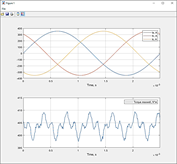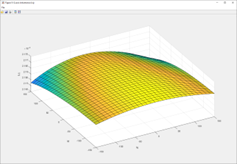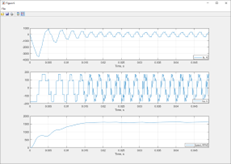Overview
MotorXP-PM is a commercial version of
MotorAnalysis-PM, a popular software for design and analysis of permanent magnet (PM) motors and generators. MotorXP-PM offers much more features and capabilities, please see the detailed comparison
MotorXP-PM vs. MotorAnalysis-PM. MotorXP-PM supports different machine types including brushless DC (BLDC) motors and generators and permanent magnet synchronous motors (PMSM) and generators with surface-mounted or interior permanent magnets (IPM). MotorXP-PM combines both finite element analysis (FEA) and analytical analysis methods providing fast and accurate results, which establishes a complete set of tools for design and analysis of permanent magnet machines.
MotorXP-PM is available as a MALTAB-based application and as a standalone program working without MATLAB.
Features
- Inner and outer rotor topologies
- Stator and rotor geometry templates
Stator geometries: Parallel tooth, Parallel slot, General slot
Rotor geometries: Surface mounted, Halbach array, Bread loaf, Straight buried, Spoke
Custom geometry templates
Create fully parameterized geometry templates for custom stator and rotor geometries of arbitrary complexity
Stator and rotor geometry can be imported from a DXF-file
Geometry export to a DXF-file
Skewed stator and rotor geometries are solved with multi-slice FEA
Useful for cogging torque minimization
Manual or automatic winding layout for all possible pole/slot combinations
Different wire sizing methods
AWG, SWG, wire diameter and slot or coil fill factor
Calculation of different winding parameters
Fundamental winding factor and harmonic winding factors, LCM and GCD of slot number and pole number, phase resistance and end turns inductance
Materials library and custom materials
Custom transistors and diodes
These can be added using data sheet parameters for inverter losses calculation
- FEA and analytical analysis methods including ultra-fast hybrid FEA-DQ method.
- Sinewave, PWM and six-step drives are supported.
- All types of losses including eddy current and hysteresis iron losses, magnet losses, retaining sleeve losses, etc.
- Permanent magnet demagnetization analysis.
- Inverter losses calculation for IGBT and MOSFET transistors (including SiC MOSFETs).
- Parametric analysis and optimization API with parallel processing for automatization of the design process.
- Time-series waveform plots and frequency spectrums
Current, voltage, back-EMF, torque, powers, losses, etc.
Air gap distribution waveform plots and frequency spectrums
Air gap flux density, radial force, etc.
Field plots and flux contours
Flux density distribution, current density distribution, loss distribution, etc.
Animated air gap distribution and field plots versus time
Steady-state performance characteristics taking into account field weakening
Torque vs. speed, torque vs. advance angle, voltage vs. speed, etc.
Steady-state performance maps
Efficiency maps, losses maps, etc.
Extraction of the D-Q model parameters (such as Ld, Lq, magnet flux linkage)
These can be used in third-party applications, such as, FEM parameterized PMSM block of Simulink© Simscape
Id and Iq lookup tables extracted from the efficiency map data
These can be uploaded into controller for optimal motor performance
Plots exported to Excel, CSV and MAT files
Analysis Methods
- Based on time-stepping magnetostatic finite element simulations assuming ideal sinusoidal or trapezoidal current waveform
- Calculation of most commonly used motor parameters like voltage, current, powers, back-EMF, torque, power factor, efficiency, losses
- Waveform plots, air gap distribution and field plots as well as animations
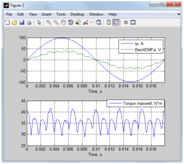

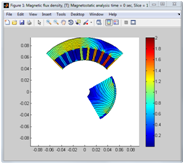
click on image to enlarge
- Based on a conventional model of the motor in D-Q reference frame derived from FEA solutions
- Saturation and cross-saturation are taken into account
- Iron losses are taken into account
- Calculation of steady-state performance characteristics and performance maps including motor and inverter efficiency maps
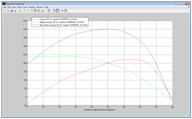


click on image to enlarge
- Based on the dynamic model of the motor in D-Q reference frame
- Simulation of the motor with PWM supply and current control algorithm
- PWM and six-step drives are supported
- Most powerful and most accurate of all the analysis methods
- Based on the time-stepping transient finite element simulations
- FEA simulations with coupled electrical circuits
- Arbitrary supply current or voltage waveforms including PWM inverter supply
- Waveform plots, air gap distribution and field plots as well as animations
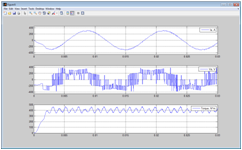


click on image to enlarge















